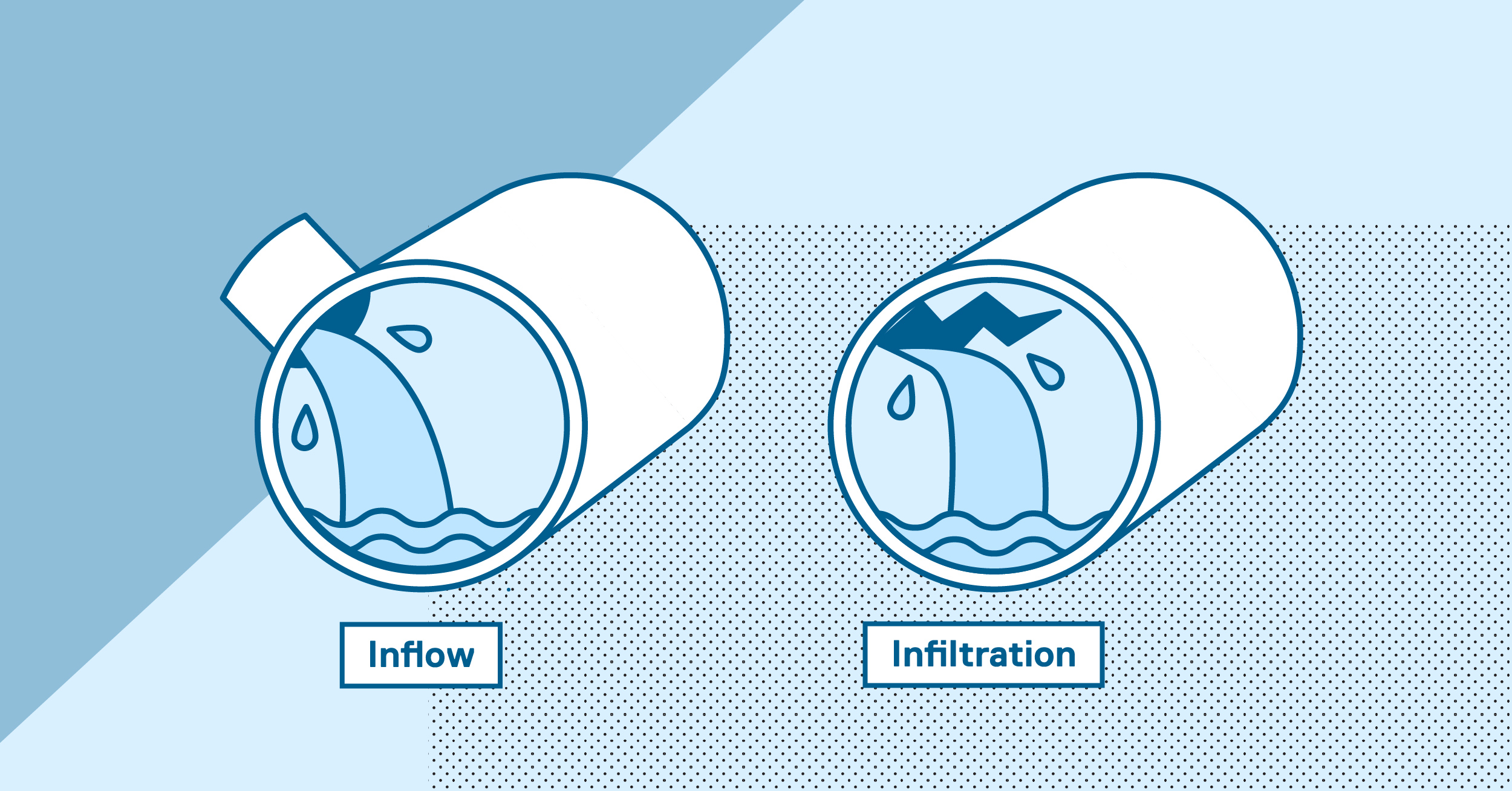Below the Surface
Inflow & Infiltration In Sewer Systems
Our industry saying goes “If it flows, it’s fine!” But, let’s be honest, that’s not always the case. Inflow and infiltration (I&I) can contaminate, overload, and damage your sewer system and water treatment facility, leading to costly repairs and PR issues.
So, how bad is inflow and infiltration? The American Society of Civil Engineers estimates I&I costs U.S. cities $100 billion every year.
Understanding inflow and infiltration can better prepare your team for storms and other disasters, while simultaneously helping you extend the lifespan of your current sewer system. Read on to learn more.
What Is Inflow & Infiltration?
In simple terms, inflow and infiltration is simply when unwanted stormwater and groundwater enters your sewer system. That said, inflow and infiltration are slightly different. Here’s how:
- Inflow - Inflow is when excess water enters your system through unwanted sources, like storm drains, downspouts, or basement sump pumps.
- Infiltration - Infiltration is when excess groundwater enters your system through cracks, leaks, and openings—usually underground.
What’s the Problem With Inflow & Infiltration?
Left unchecked, inflow and infiltration can gradually destroy your sewer system and municipal properties by causing:
- public overflows
- treatment plant overload
- basement backups
- and more
But that’s not all. There are bigger problems as well, including:
- infrastructure failures
- increased operational costs
- environmental contamination
- potential fines
- damage to homes and businesses
All of these can be expensive to address, and the potential reputational damage within the community can take years to repair.
How to Stop Inflow & Infiltration
Stopping, resolving, and preventing I&I is a multi-step process. Here’s how to navigate it:
1. Inspect Your System
Search for areas where unwanted and excess water enters your system —specifically your mainline, laterals, and manholes. Some of the best tools include:
2. Deploy Solutions
Once you’ve identified sources of I&I, it’s time to develop a cost-effective solution.
Some solutions, like creating new seals with appropriate grout and rehab equipment, can provide a long-term fix at a fraction of the price for a full pipeline replacement.
3. Conduct Routine Inspections
The most proactive municipalities maintain a pipeline inspection schedule to ensure they’re regularly inspecting all pieces of their systems.
Consequently, these municipalities consistently identify issues before they develop into costly catastrophic events that damage communities and public health.
Case Study: Eliminating I&I In Taylors, SC
In 2008, Taylors Fire And Sewer District signed an agreement to completely eliminate inflow and infiltration into their five-county wastewater collections system over a 15-year period.
Taylors immediately turned to CUES for:
- A CUES K2 Truck-Mounted System
- A self-propelled lateral inspection system
- A mini pan-and-tilt lateral launch system
- Mainline camera and transporters, now upgraded current version: CPR/OZ3S
With their upgrades, Taylors exceeded its goal of inspecting at least eight miles of line every year—gradually helping the region block I&I altogether.
Read the full case study to learn more.
Find I&I Solutions With CUES
As global leaders in water, wastewater, and stormwater inspection equipment, we’re your go-to resource for sewer inspections and repairs.
View our entire line of products or find your local CUES sales rep to learn more.
FAQ: Inflow & Infiltration
What is inflow and infiltration?
Inflow and infiltration is when unwanted stormwater, groundwater, and wastewater enters your sewer system.
How does inflow and infiltration impact treatment plants?
Inflow and infiltration can damage or overwhelm treatment plants, potentially spilling sewage, bacteria, and disease into communities and ecosystems.
How do you reduce inflow and infiltration?
Regularly inspecting, repairing, and maintaining pipelines and sewer systems is key to reducing future I&I.
